Office Ergonomics for Dummies
In today's fast-paced professional environments, the concept of ergonomics has moved to the forefront of office design. But what exactly does ergonomics mean in the office setting, and why is it so crucial to the modern workplace? This guide will explore the origins of ergonomics in office spaces, its relevance today, and the types of ergonomic furniture that can improve comfort, productivity, and overall wellbeing.
The Origins of Ergonomics in the Workplace
The term "ergonomics" comes from the Greek words "ergon" (work) and "nomos" (laws), meaning the science of work. Initially rooted in industrial engineering, ergonomics gained prominence in the early 20th century as a way to improve worker safety and efficiency in factories. The office environment soon followed, especially as technology introduced new challenges like long hours seated at desks and constant use of computers.
The rise of ergonomics in office spaces can be traced to the mid-20th century when health professionals began to recognize the adverse effects of prolonged sitting, repetitive tasks, and poor posture. Workplace injuries, such as back pain and carpal tunnel syndrome, became common issues that were traced back to the design of workspaces. This is when the need for ergonomic office furniture like office chairs and desks became apparent.

Why Ergonomics Is Essential in the Office
Ergonomics is the study of designing equipment and devices that fit the human body, its movements, and its cognitive abilities. When applied to the workplace, it ensures that office environments are structured in a way that reduces strain on employees and promotes better physical and mental health.
In the context of corporate offices, universities, and government agencies, where employees spend long hours at desks, ergonomics helps to mitigate the risks of musculoskeletal disorders, chronic pain, and fatigue. For hospitals and healthcare centres, ergonomic design improves the efficiency of medical professionals, while in cafes and restaurants, it enhances comfort for both employees and customers.
Ergonomics isn't just about comfort; it's also about productivity. Studies show that workers using ergonomic office seating and properly adjusted desks experience fewer health issues, which translates into reduced absenteeism, better focus, and overall higher job satisfaction.

What Ergonomics Really Means
Ergonomics goes beyond simply providing a comfortable chair. It's about creating a workspace that adapts to the user, rather than forcing the user to adapt to the space. In essence, it means aligning the physical environment with human needs and limitations.
Ergonomic office furniture is specifically designed to support the body in a neutral position, reducing the strain on muscles and joints. For example, ergonomic desks are adjustable to suit different heights, allowing users to alternate between sitting and standing, while office chairs with proper lumbar support and adjustable features help maintain natural spine alignment.
In commercial settings such as educational institutes or government offices, ergonomic desking and seating are pivotal in preventing common workplace injuries. These spaces, where diverse populations work and study, require flexible solutions that cater to different body types and work styles.

The Importance of Ergonomics in the Workplace
The benefits of ergonomic office design are well-documented. Whether you're outfitting a corporate office, a university library, or a government agency, investing in ergonomic furniture reduces the risk of work-related injuries and boosts productivity. For instance, ergonomic task chairs with adjustable armrests, headrests, and lumbar support ensure that individuals can work for extended periods without compromising their physical health.
Moreover, sit-stand desks are another example of ergonomic office furniture that has gained popularity. These height-adjustable desks allow employees to alternate between sitting and standing throughout the day, reducing the risk of developing conditions like heart disease or obesity that are linked to prolonged sitting.
In the education sector, students can benefit from ergonomic chairs and desks, which improve focus and comfort during long study sessions. In healthcare facilities, where staff often work long shifts, ergonomic seating is essential to prevent fatigue and maintain efficiency.

Examples of Ergonomic Office Furniture
- Ergonomic Office Chairs: These chairs are designed to support the natural curve of the spine and often feature adjustable settings for height, armrests, and lumbar support. This prevents strain on the lower back and promotes a healthy sitting posture.
- Ergonomic Desks: Adjustable desks, especially sit-stand models, allow for flexibility in working positions. By alternating between sitting and standing, employees can reduce the risk of long-term health problems associated with sedentary work.
- Monitor Stands: Ensuring that computer screens are at eye level helps reduce strain on the neck and shoulders. Monitor stands or arms can adjust the height and angle of the screen for optimal viewing.
- Desk Risers: These accessories can help prevent repetitive strain injuries, such as carpal tunnel syndrome, by allowing the hands and wrists to remain in a neutral position while typing.
- Footrests: For shorter employees or those who prefer their feet slightly elevated, footrests offer added support and comfort during long hours of sitting.

Conclusion: Ergonomics as an Investment in Health and Productivity
Ergonomics is far more than just a trend in office design—it is an investment in the health, wellbeing, and productivity of employees. From ergonomic office chairs to height-adjustable desks, the right furniture can make a significant difference in how employees feel and perform on the job.
Whether you’re designing an office for a corporate environment, a school, a university, or a healthcare facility, investing in ergonomic office solutions will create a more comfortable and productive workspace. By reducing the risk of injury, promoting better posture, and improving overall comfort, ergonomic furniture can help organizations enhance their bottom line while ensuring the long-term health and satisfaction of their employees.
For organizations across Australia—from schools and universities to cafes, hospitals, and government offices—ergonomic office design is not just a luxury but a necessity. As we continue to prioritize worker health and productivity, the role of ergonomics in the workplace will only continue to grow.


















